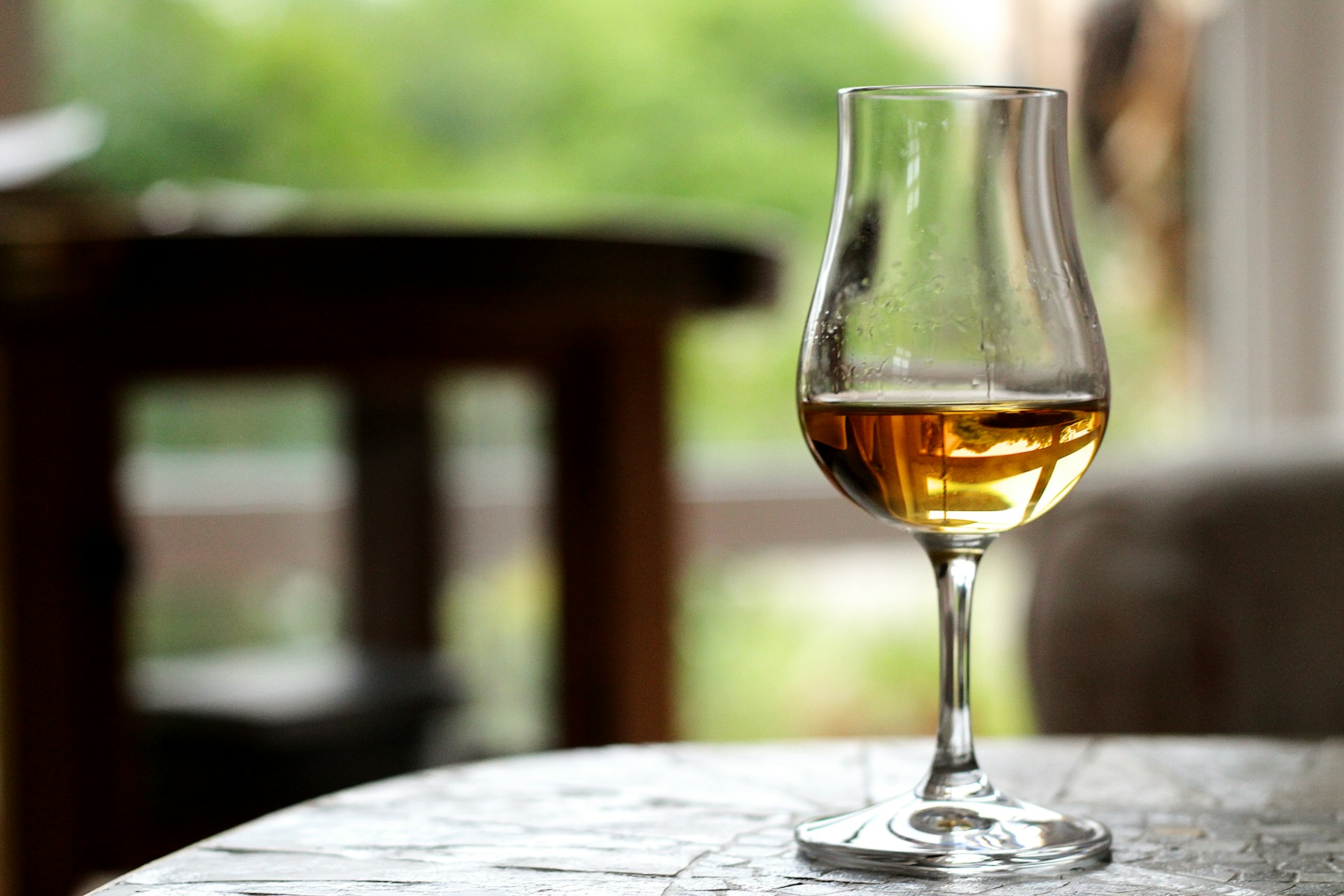
If you’re new to bourbon, you probably pour your favorite whiskey into a rocks glass with or without ice and sip it while you binge-watch the newest show du jour on Netflix and call it good. And while that’s all well and good, as we aren’t here to tell anyone how to imbibe whiskey, you might not be enjoying it as much as you could be. That’s to say that there are whiskey glasses designed to elevate and heighten your whiskey-tasting experience.
Don’t believe us? Just take your classic rocks glass, for example. It’s fairly uniform and unexciting. It’s designed for cocktails. That’s because when you drink an Old Fashioned. Sazerac, or Whiskey Sour the experience is all about the various flavors the ingredients (when combined with whiskey) create.

Why the glass matters
But if you want to truly taste your favorite bourbon, the glass you use to do so is extremely important. To get the full whiskey-tasting experience, you’ll need a glass that allows you to enjoy the aromas and flavors. It would be best if you had a glass with a stem on the bottom to hold it so the heat of your hand doesn’t affect the aroma and flavor. You also need a glass with a wide body for swirling and a smaller opening to let the aromas really shine.
Also, while you can add a few drops of water to open the whiskey, it’s best to avoid ice unless you want to water it down too much and lose much of the nuanced flavors.

The different glasses
As we mentioned before, there’s nothing wrong with sipping your go-to bourbon out of a rocks glass, a red Solo cup, or an elegant teacup. You can add crushed ice or a giant cube if you prefer. It’s all good with us. It’s just that if this is how you drink your bourbon, you’re never really going to unlock all the various, complex aromas and flavors. For this, you need the right glass. And while there are myriad glasses on the market, there are two that stand above the rest. We’re talking about the classic snifter and the popular Glencairn glass.
Each of these glasses was designed to heighten your sensory experience–the shape, the opening, and even the stem. There’s a science behind whiskey tasting, and the makers of these glasses figured it out.

The two most important bourbon glasses
When it comes to tasting bourbon, there are two must-have glasses. The aforementioned Glencairn glass and the snifter glass. Both are (you guessed it) made of glass. Both have a similar body and are designed for the same purpose, but each has its own unique makeup.

Snifter
A popular glass among brandy and Cognac drinkers, the snifter comes in a variety of sizes. While you can enjoy the larger balloon size, we prefer the slim, funnel-like design for bourbon sampling. The large body is great for swirling. And while you might think that’s just for show, it helps to open up the whiskey’s body to immerse yourself in all of the various complex flavors.
The narrow opening also helps to maximize the aroma and allows you to experience every nuanced aromatic note. The small stem is designed to hold the bourbon away from the heat of your skin, thus impacting the aroma and flavor. Adding a few drops of water only adds to the scents and flavors and opens the whiskey up even more.

Glencairn
Popular among single-malt Scotch drinkers, the Glencairn glass is also well-suited for bourbon lovers. Many whiskey drinkers believe that the Glencairn glass is the far superior vessel for nosing and tasting. It’s designed with a round tulip shape, a smaller opening for nosing, and a thick, rounded base. On top of being more rugged than the snifter, its base makes it easier to swirl and watch the whiskey’s legs as they fall down the sides of the glass.
Its bulbous bowl and small opening are crafted to swirl and maximize the aromas. Its smaller opening also removes some of the more abrasive, harsh alcohol aromas so you can truly enjoy the caramel, vanilla, dried fruits, and oak scents of the long-aged whiskey. After sipping, slowing drinking from this class heightens the experience even more. Its flared opening allows a better angle for sipping as well.

What bourbon should you drink?
If you want to get the most out of your bourbon-tasting experience, you’ll purchase one of the above glasses. Buy them both and compare or simply choose the one that most appeals to you. You’ll be happy you did as you enjoy your whiskey in a whole new way. You might be wondering how these different glasses handle various types of bourbon. Bottled-in-bond, small batch, wheated, it doesn’t really matter. Both of these glasses will handle all of these different types of bourbon accordingly. Both will elevate your nosing and tasting experience. It’s just that if you’re sampling a cask-strength bourbon, you’ll likely want to add a few drops of water to open it up and temper that high proof.



